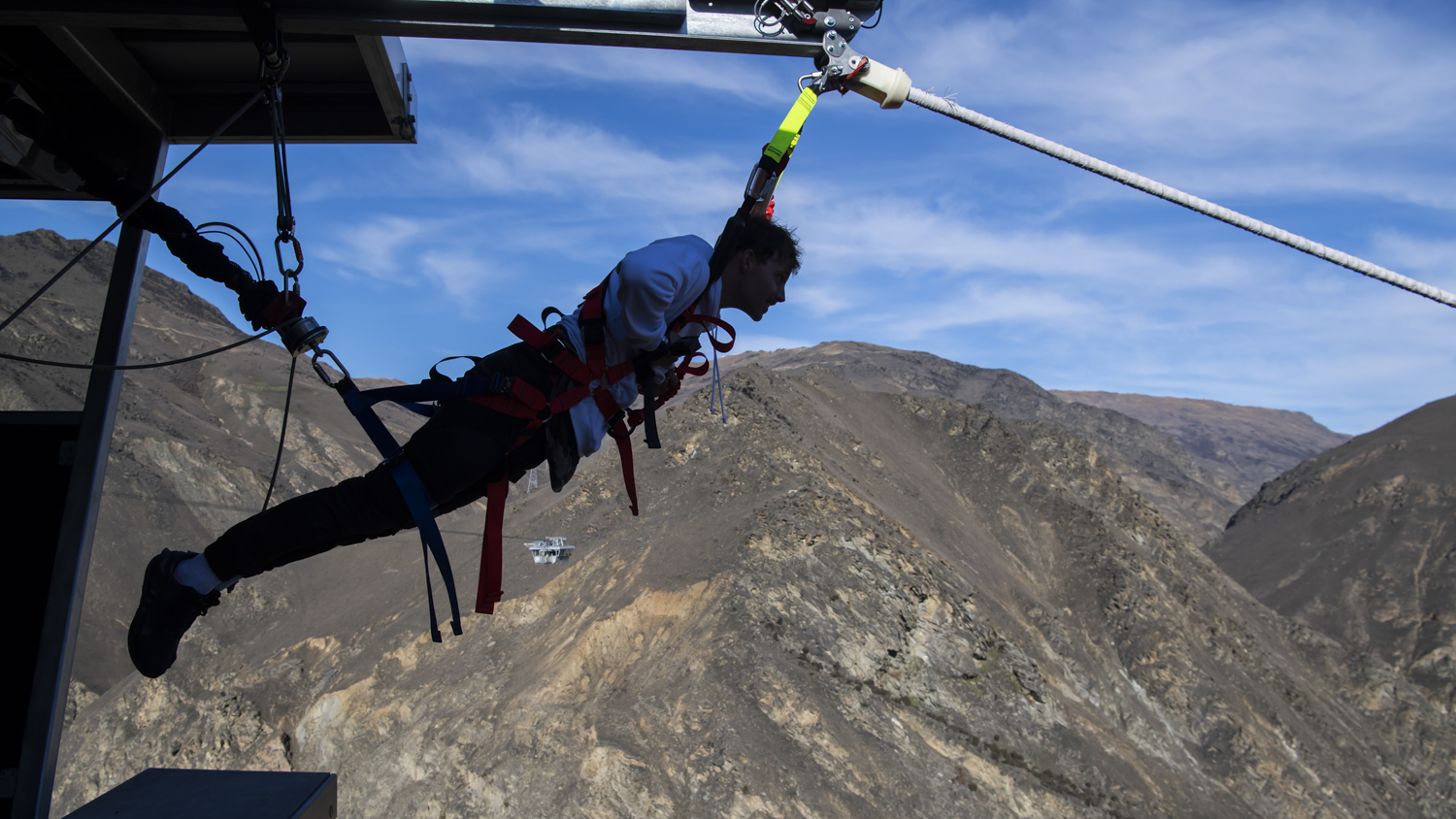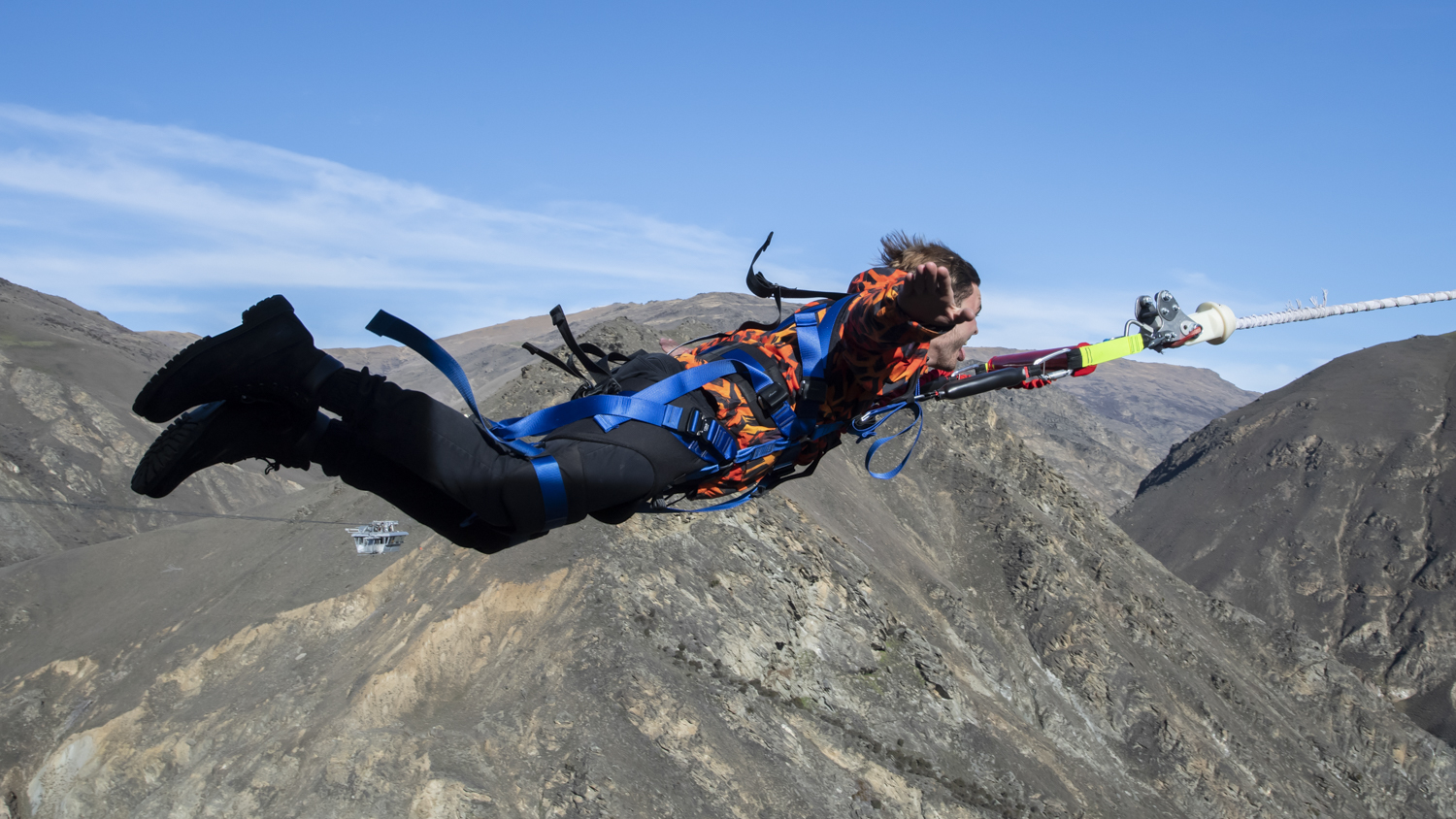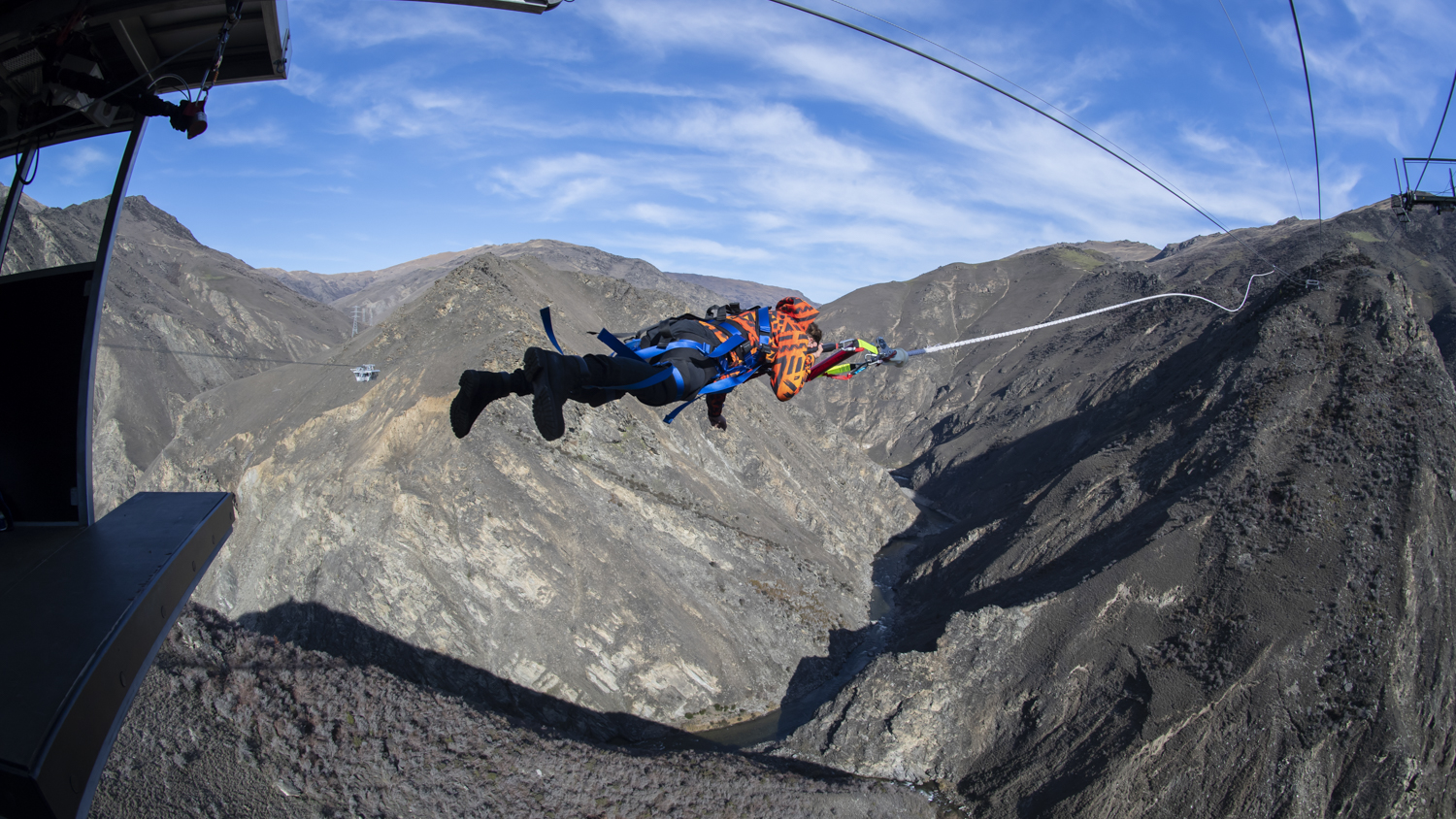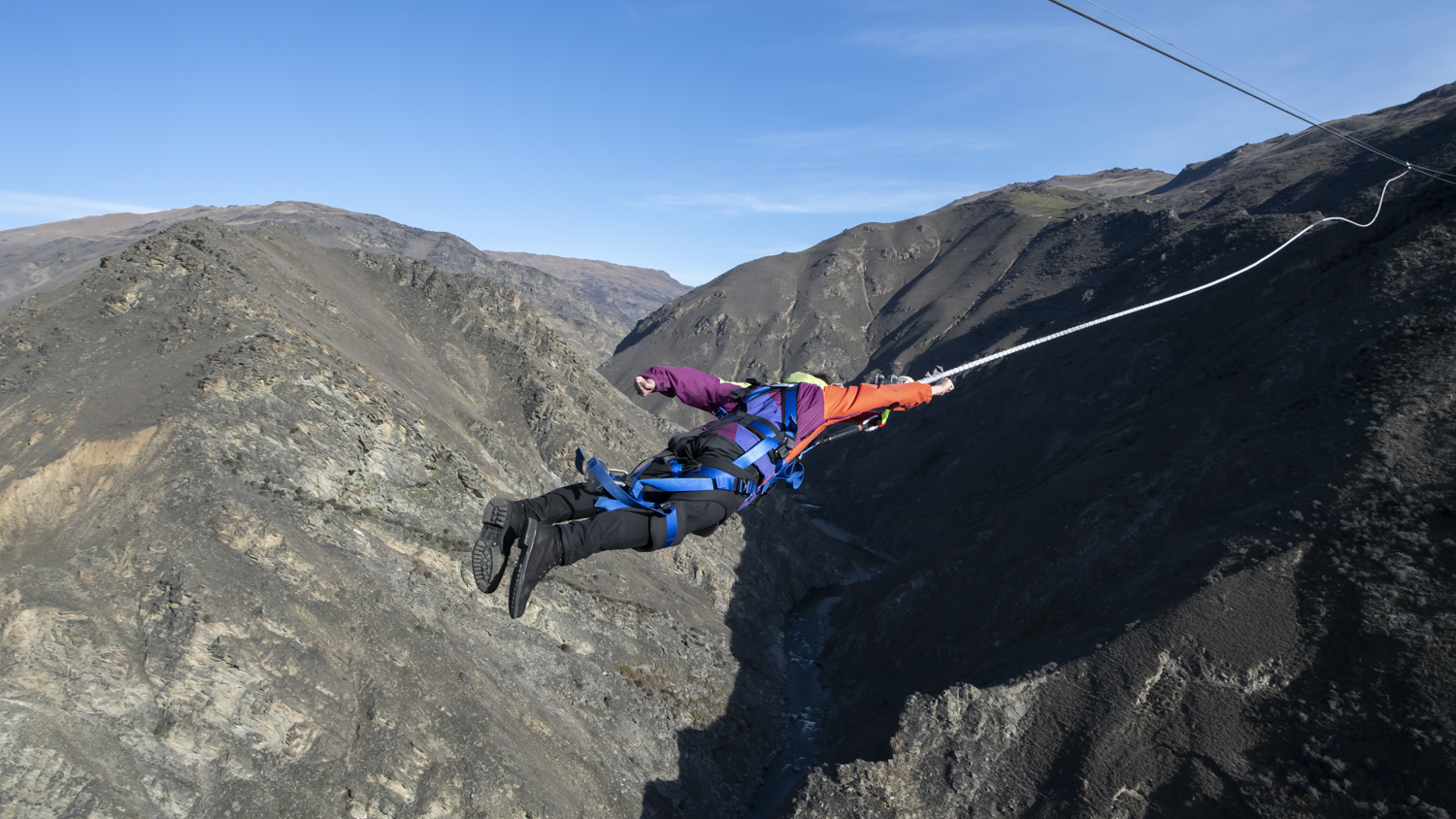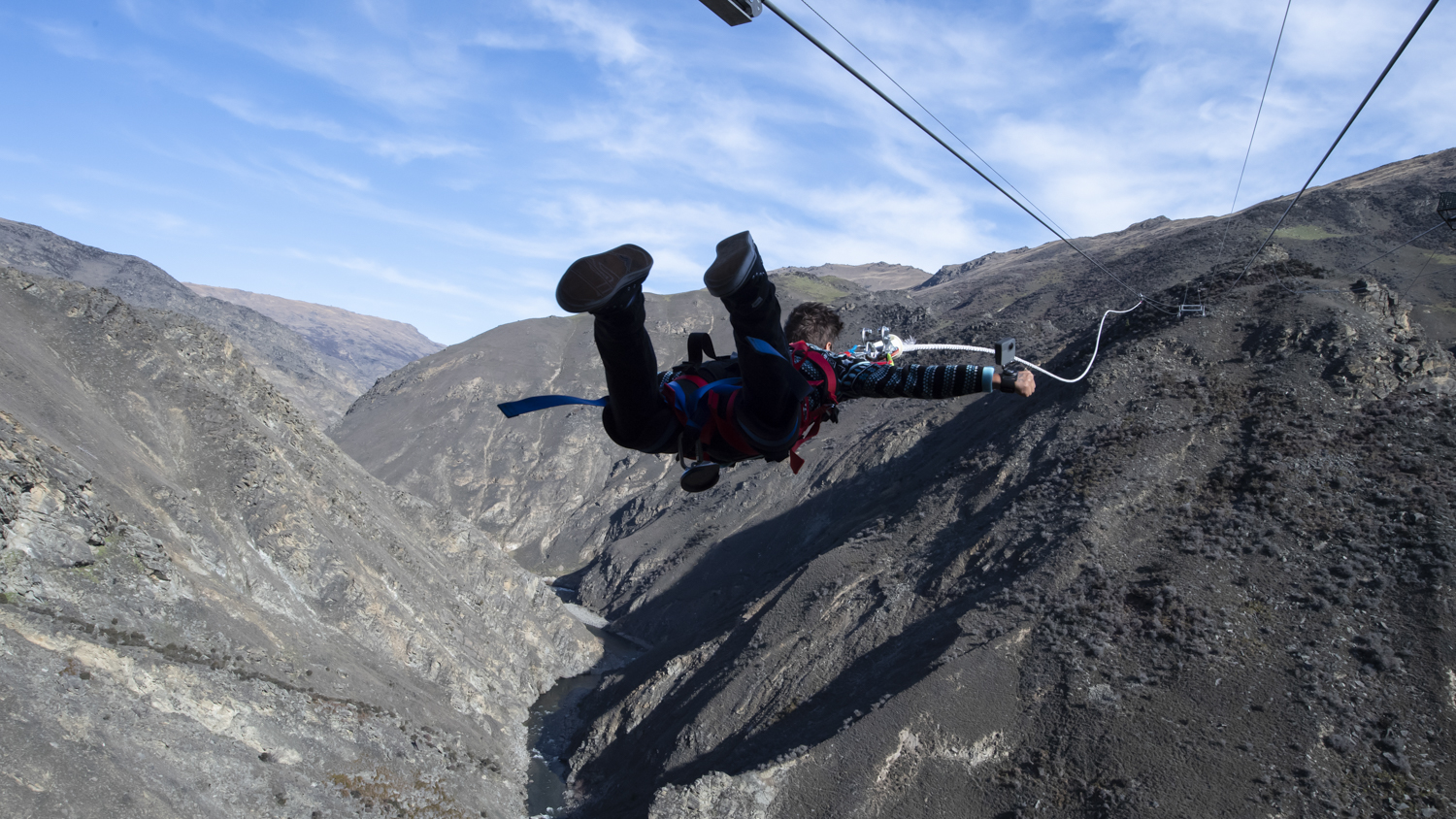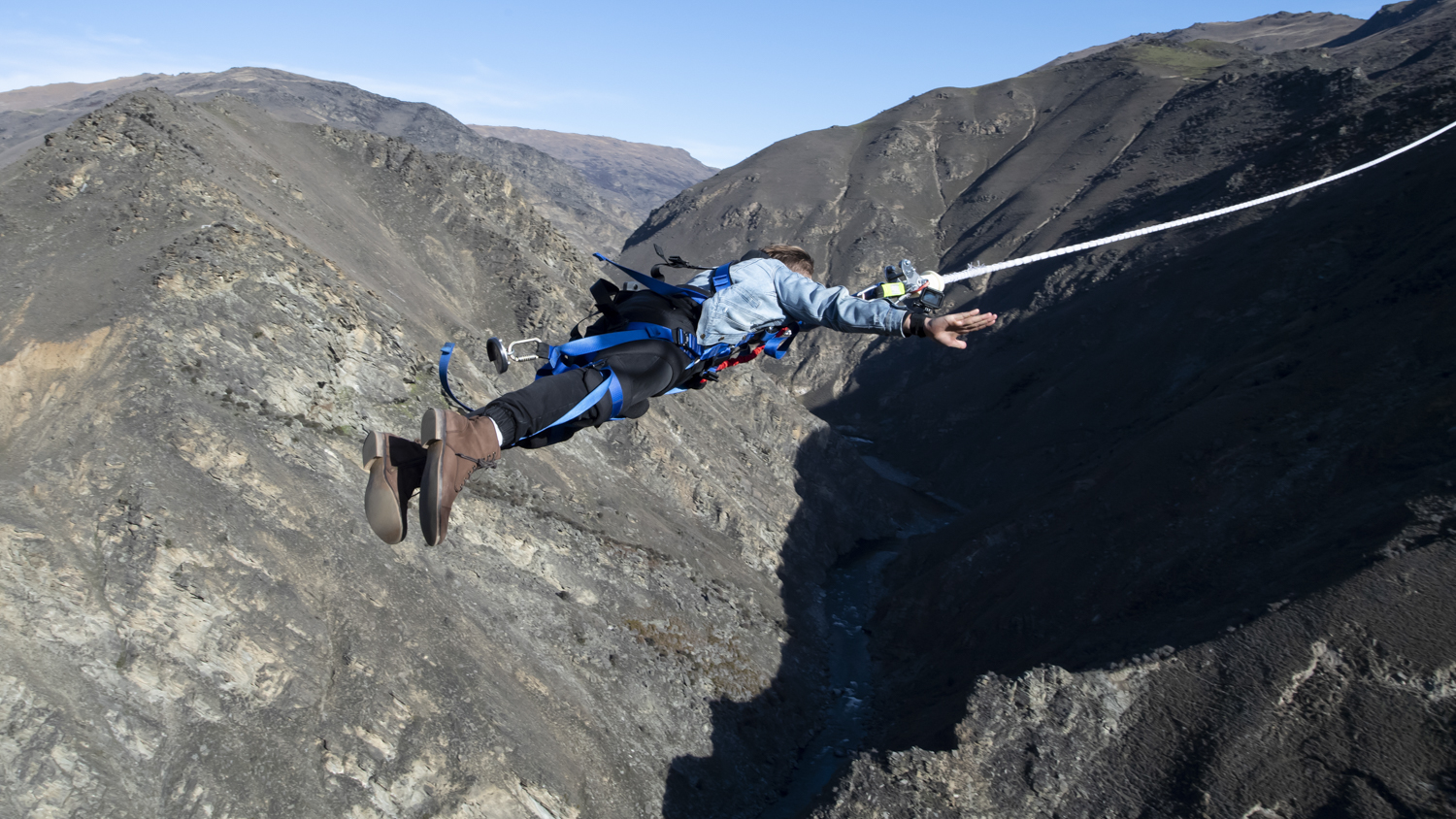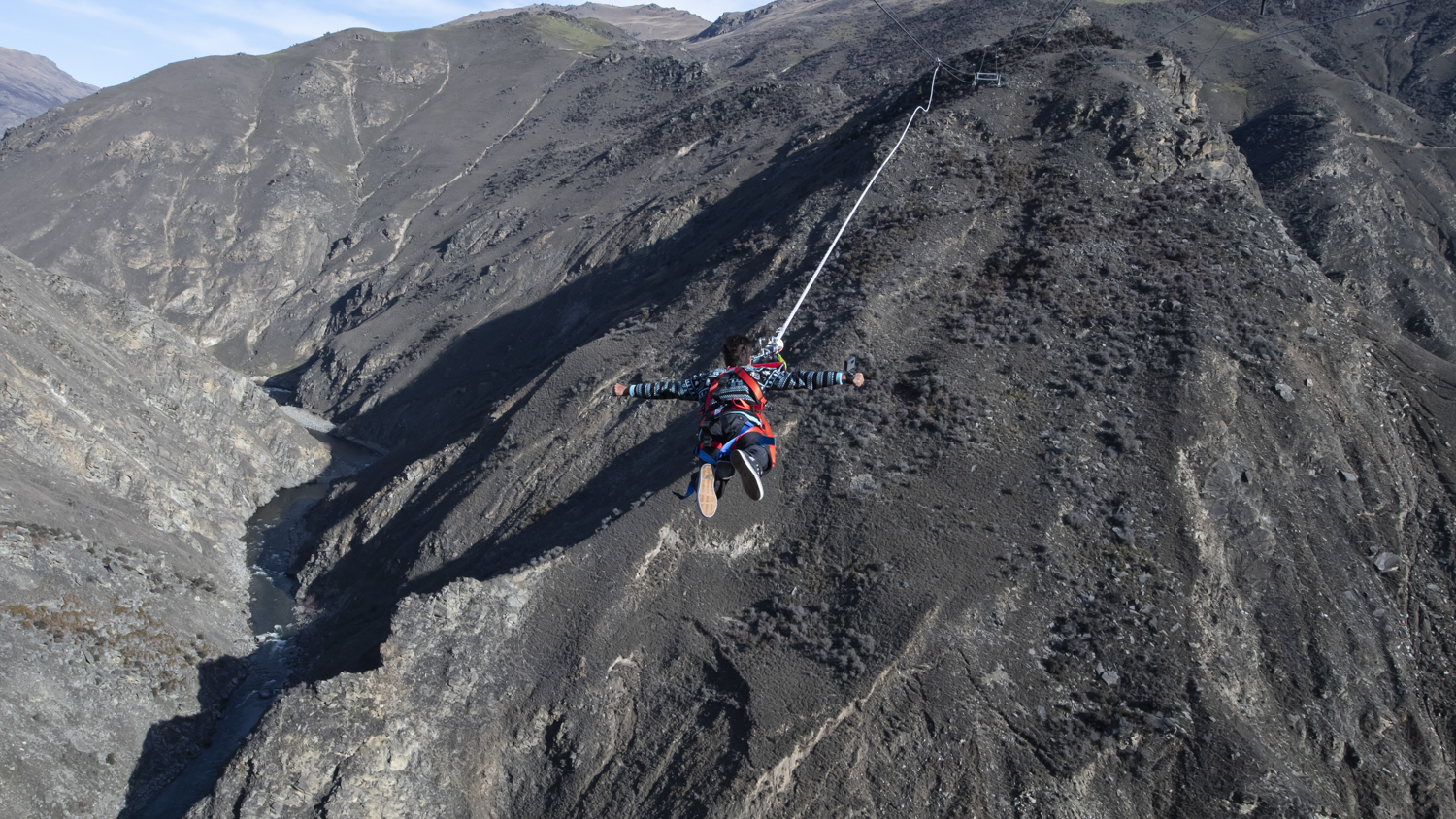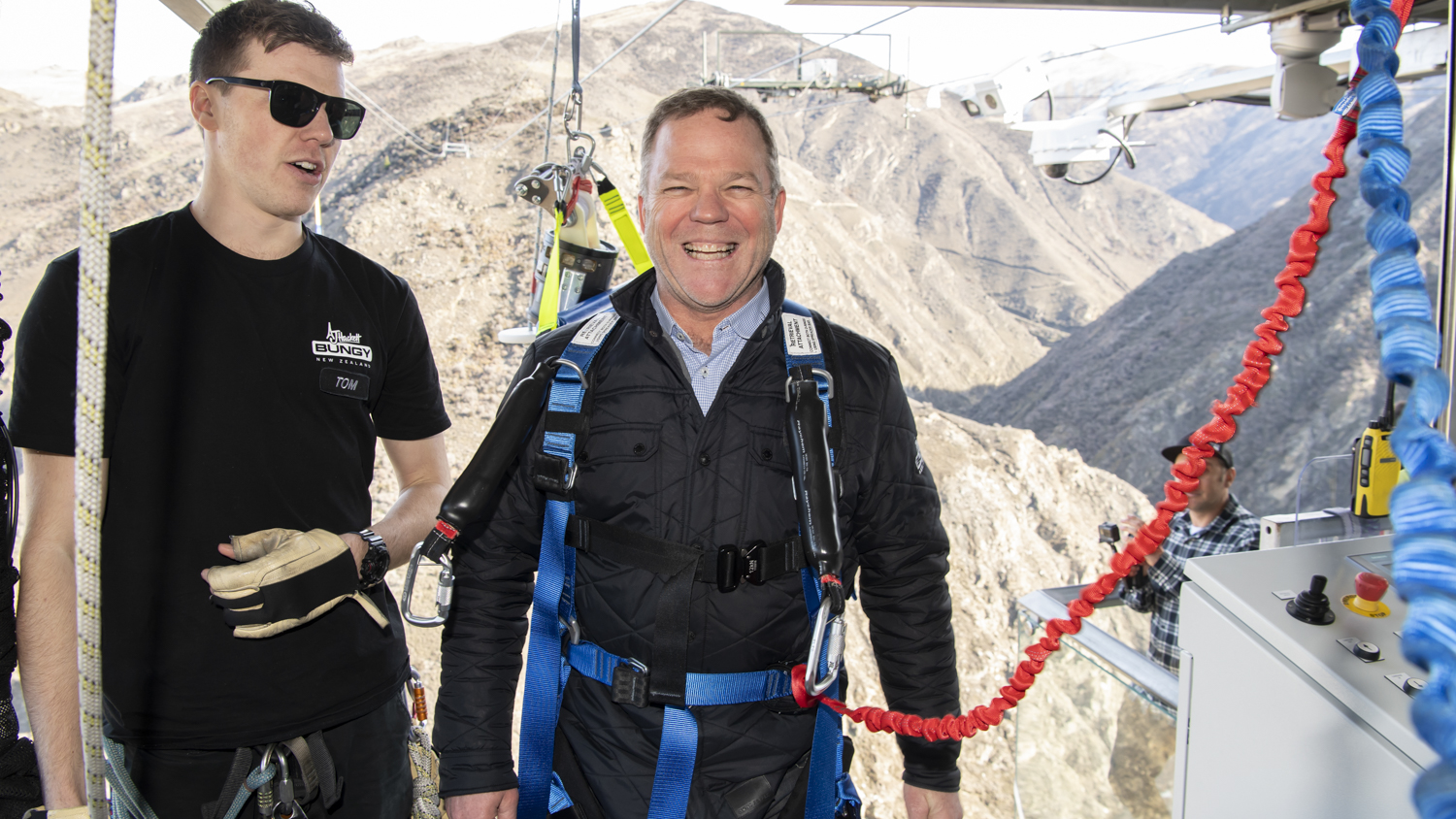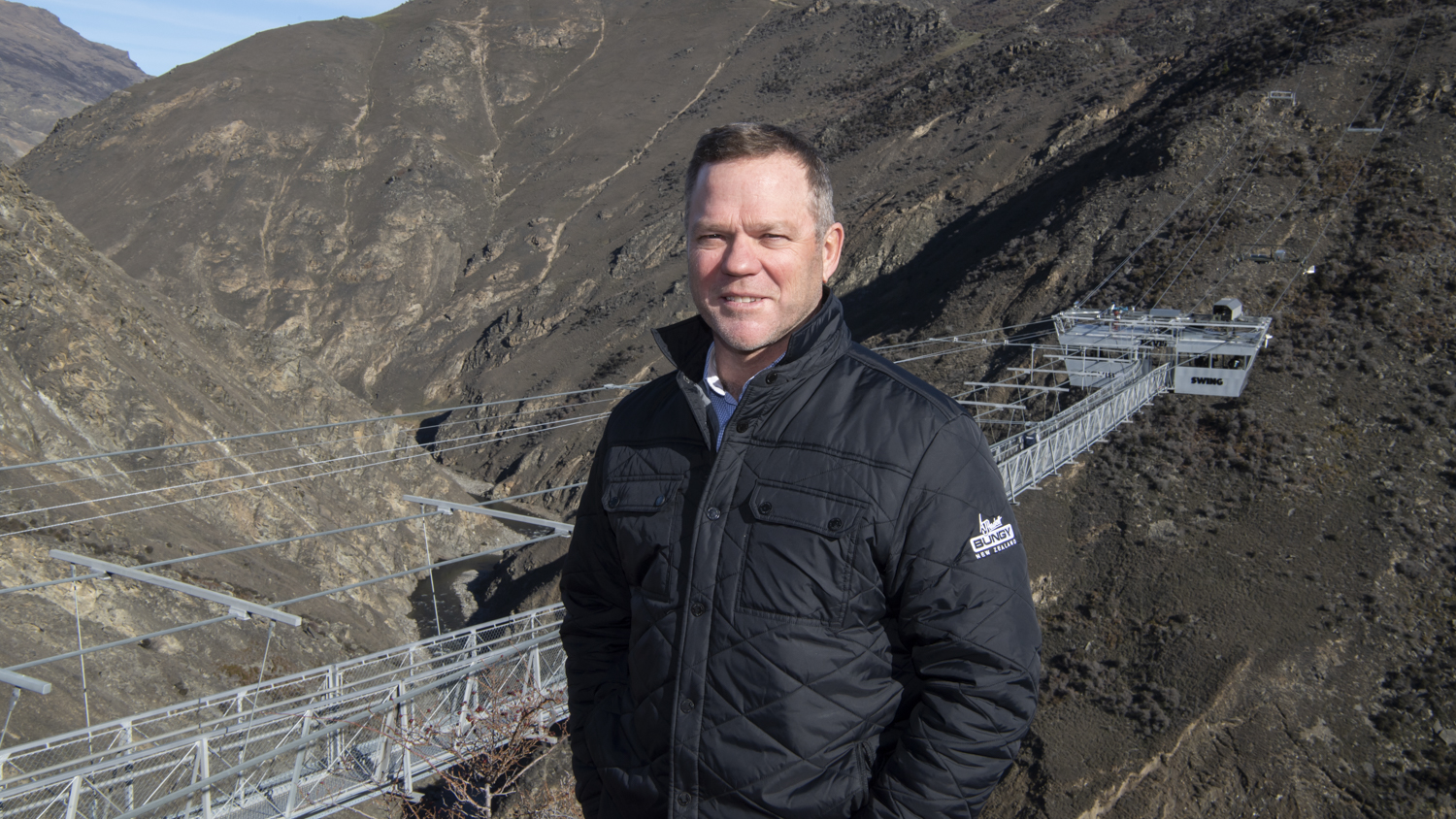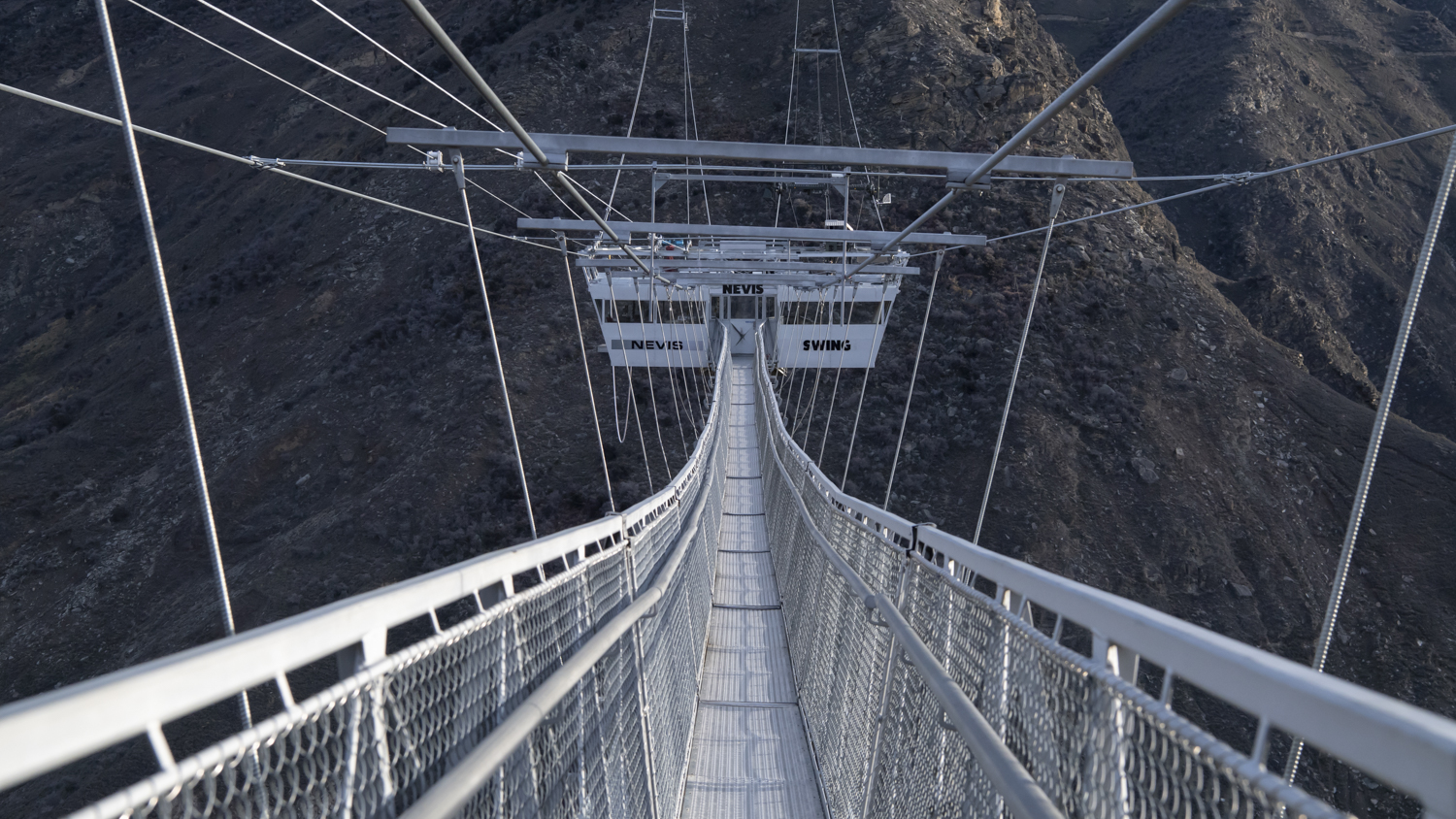By now, you’d think humans would be running out of new ways to cheat death. Yet, it seems every year, someone (usually New Zealanders) finds an even more extreme method of upping the adrenaline rush for adventure tourists. This month, the country debuted the Nevis Catapult, the biggest, most extreme experience of its kind in the world.
Based near Queenstown in the remote and beautiful Nevis Valley, the Nevis Catapult is accessible only via four-wheel-drive bus. Imagine a human slingshot — equal parts canyon swing and bungee jump. Visitors trek to the Nevis Swing pod to prepare for launch. The process is a bit like old-school bungee jumping, which only drops you once then lets you haphazardly bounce up and down. The catapult instead uses a high-tech winch system to propel victims nearly 500 feet up and out over the valley floor. The ride tops 60 miles per hour in just 1.5 seconds with 3Gs of force. This is all followed by a series of gut-wrenching bounces and drops. The entire experience lasts less than four minutes.
It’s no surprise the Nevis Catapult was born in New Zealand, the self-proclaimed “Adventure Capital of the World.” The Kiwis are notoriously fun and fearless, bordering on crazy. Queenstown was and still is home to the world’s first bungee jumping site, but that’s so early-2000s. In the decades since, the country has debuted canyoning (a sport that combines hiking and abseiling through waterfalls), a one-of-a-kind wildwire Lord of the Rungs experience (an exhilarating blend of via ferrata, scrambling behind a waterfall, and a helicopter descent), and OGO (picture tumbling downhill in a giant inflatable hamster ball).
Requirements to ride the Nevis Catapult are minimal. As long as you’re over 13 years old, under 280 pounds (127 kilograms), and reasonably fit, you’re in. The price tag is a reasonable NZD $255 (approximately USD $170).
There is, of course, much more to New Zealand than Instagram-worthy bucket list thrills. For something a touch less heart-pounding, but no less adventurous, hardcore hikers will love the Te Araroa Trail, New Zealand’s greatest thru-hike. The country is also home to a burgeoning craft beer scene, world-class beaches, delicious sauvignon blanc and pinot noir, and incredible stargazing opportunities.
